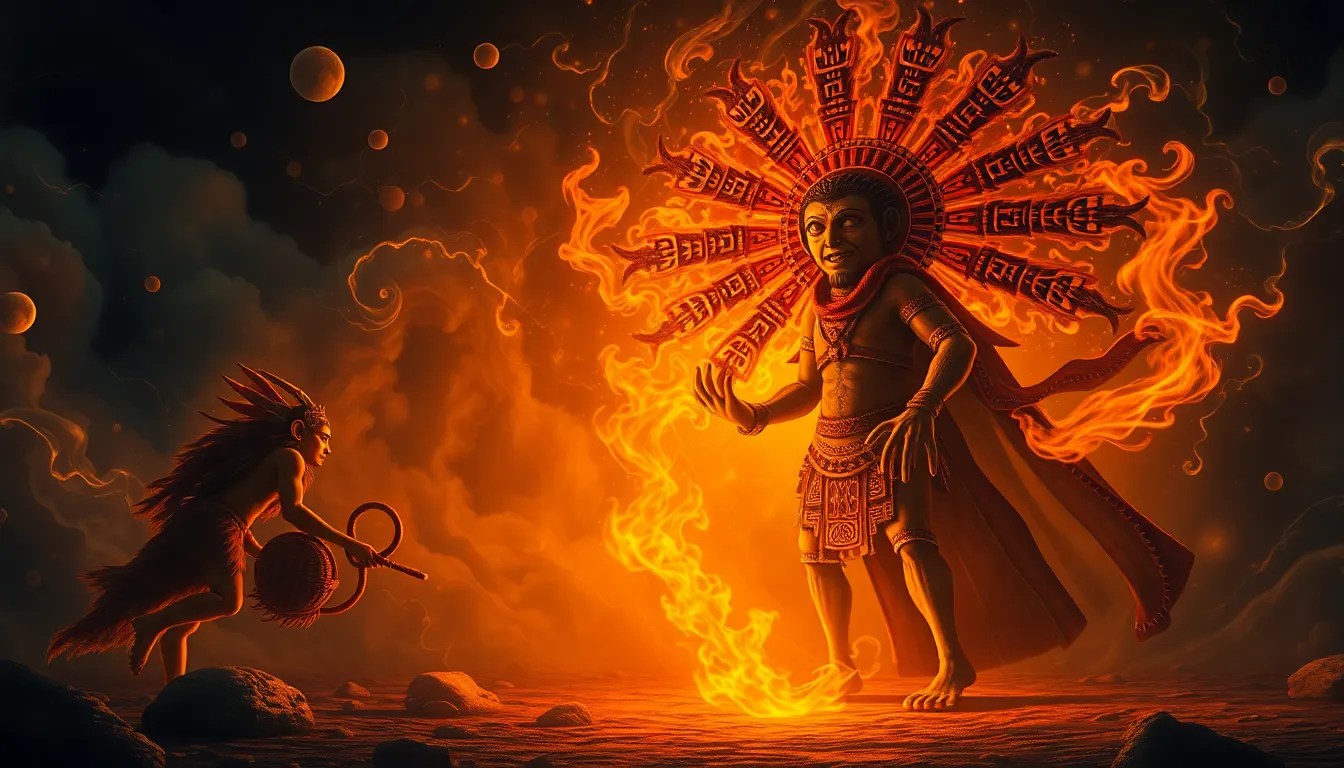The Role of Dreams in Mayan Animistic Practices
I. Introduction to Mayan Animistic Beliefs
The Maya civilization, known for its remarkable achievements in architecture, mathematics, and astronomy, also possessed a rich tapestry of spiritual beliefs. At the heart of Mayan cosmology lies animism, a worldview that imbues all elements of nature—be it a tree, a river, or a celestial body—with spiritual significance. In this context, dreams emerged as a vital component of their belief system, acting as conduits for communication with the spiritual realm.
Dreams held a profound significance in Mayan culture, often perceived as messages from the gods, ancestors, or the spirit world. This article explores the intricate role that dreams play within Mayan animistic practices, shedding light on their interpretation, rituals, and the enduring legacy in contemporary society.
II. The Nature of Dreams in Maya Culture
A. Types of dreams recognized by the Maya
The Maya categorized dreams into several types, each with distinct meanings and implications:
- Prophetic Dreams: These dreams were believed to foretell future events or provide guidance about significant life decisions.
- Healing Dreams: Dreams that offered insights into physical ailments or spiritual imbalances, often indicating the need for specific remedies.
- Visions: A more intense form of dreaming, often experienced during spiritual rituals, where individuals encountered deities or ancestral spirits.
B. Interpretation of dreams and their meanings
Dream interpretation was an essential skill within Mayan society, often entrusted to shamans or spiritual leaders. Each dream was analyzed for symbols and themes, which were believed to possess specific meanings. For instance, dreaming of a jaguar could signify strength and power, while a dream featuring water might represent purification and renewal.
III. Dreams as a Connection to the Spiritual Realm
A. How dreams serve as a bridge between the physical and spiritual worlds
In Mayan thought, dreams were not merely reflections of the subconscious; they were viewed as a direct link to the spiritual realm. During sleep, the soul was believed to travel beyond the physical body, allowing individuals to communicate with divine entities or deceased ancestors. This connection emphasized the importance of dreams as a means of receiving guidance and wisdom from beyond.
B. Roles of ancestors and deities in dream narratives
Ancestors and gods played pivotal roles in dream narratives. Many dreams featured ancestral figures providing advice or warnings, reinforcing the idea of continuity between past and present. Similarly, deities would appear in dreams to impart knowledge or blessings, showcasing their active involvement in the daily lives of the Maya.
IV. Rituals and Practices Surrounding Dreams
A. Dream incubation and its significance
Dream incubation was a common practice among the Maya, where individuals would engage in specific rituals to encourage prophetic dreams. This could involve spending time in a sacred space, fasting, or using herbal offerings. The intention was to invite the divine presence into their dreams, seeking clarity on personal or communal issues.
B. Ceremonial practices to honor dream messages
Once a dream was interpreted, it often led to ceremonial practices aimed at honoring the messages received. This could involve:
- Offering food or flowers to a deity or ancestor.
- Participating in communal rituals to celebrate the insights gained.
- Performing cleansing ceremonies to release negative energies.
V. The Role of Shamans in Dream Interpretation
A. The shaman’s authority and expertise in dream analysis
Shamans held a revered position within Mayan society, acting as intermediaries between the physical and spiritual worlds. Their expertise in dream interpretation was critical, as they were trained to decipher the complex symbolism found in dreams. Through rituals, they would facilitate healing and provide guidance based on the dreams of individuals or the community.
B. Case studies of shamanic interventions based on dreams
There are numerous accounts of shamans intervening based on dreams. One notable example involves a villager who dreamt of a serpent that warned of impending drought. The shaman interpreted this dream as a signal to conduct a ritual for rain, leading the community to perform a ceremony that ultimately resulted in a bountiful harvest.
VI. Dreams in Daily Life and Decision Making
A. Influences of dreams on personal and communal decisions
Dreams often influenced both personal and communal decisions within Mayan society. Individuals would consult their dreams when making important life choices, such as marriage or career paths. On a communal level, dreams could shape agricultural practices or ritual calendars, reflecting the interconnectedness of dream life and daily existence.
B. Examples of dream-inspired actions and outcomes
There are countless examples of dreams leading to significant actions. For instance, a leader might dream of a particular crop thriving, prompting the community to plant it, resulting in improved yields. Conversely, a dream of a natural disaster could lead to preparations to avert potential crises.
VII. Modern Perspectives on Mayan Dreams
A. Continuation of dream practices in contemporary Mayan communities
Despite the challenges posed by modernization and globalization, many contemporary Mayan communities continue to uphold traditional dream practices. These practices serve not only as a connection to their cultural heritage but also as a means of navigating the complexities of modern life.
B. Impact of globalization and cultural preservation efforts
Globalization has introduced new influences, but it has also sparked a resurgence of interest in cultural preservation. Efforts to document and revitalize traditional practices, including dream interpretation, are underway, ensuring that these vital aspects of Mayan identity are retained for future generations.
VIII. Conclusion
Dreams play an integral role in Mayan animistic practices, serving as crucial links to the spiritual realm and guiding personal and communal decisions. The rich tradition of dream interpretation, coupled with rituals and the authority of shamans, underscores the significance of dreams in Mayan culture. As contemporary communities strive to preserve these practices amidst modernization, the study of dreams in Mayan society remains a fertile ground for future research and exploration.



